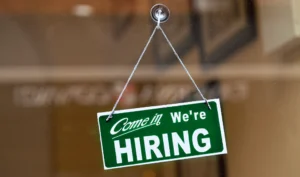
How AI-Powered Background Checks Supercharged Our Hiring Process
Sponsored by Checkr. My talent team uses AI and automations every day, in almost every workflow. Yes, we’re a tech company (so AI is basically

Sponsored by Checkr. My talent team uses AI and automations every day, in almost every workflow. Yes, we’re a tech company (so AI is basically

As artificial intelligence continues to spread across the business landscape, it is transforming work in countless ways. For example, thanks to AI, we’re entering a

We’ve all seen the headlines. Dystopian predictions about the long-term economic impact of artificial intelligence (AI) continue to dominate the news. But what do people

Workplace evolution is natural. In its time, the digital workplace of the late 20th century was revolutionary. But that era has come and gone. And

Among the many trends that are rapidly redefining work, perhaps the most consequential for HR is the arrival of artificial intelligence (AI). But this points

The challenges talent leaders face these days with recruitment marketing remind me of my past life as a swimmer. Despite the early mornings, hard workouts,

Automation is a red-hot topic in business circles, and HR is no exception. For instance, to compete in today’s challenging labor market, many employers are

What is ChatGPT? It’s no secret — recruiting professionals are still struggling to find strong candidates for job openings. Competition for top talent remains fierce,

Sponsored by: Neocase Did you know more than 160 million people are employed in the U.S.? Unfortunately, however, rising turnover is eroding workforce retention. In

Listen to the full conversation and see our questions for the upcoming #WorkTrends Twitter Chat. And don’t forget to subscribe to the podcast, so you

AI is here to stay. You are going to need to hire AI talent no matter what your industry is — and now is the

HR automation shouldn’t replace employees. It should increase productivity. These three routes can lead to that perfect balance of automation.

Futurist and tech billionaire, Elon Musk, believes we may not be far from a time where robots and various forms of artificial intelligence (AI) will
Before we can address the question of what jobs will be created for humans as automation takes over current roles, we need to focus on
This is the final part in a four-part series on why talent acquisition doesn’t need to reinvent the ATS. Read Part 1, Part 2 and
TalentWise just wrapped up our best HR Tech conference yet. As I cruised the show floor, engaged with analysts and customers, and chatted with fellow
The TalentCulture #TChat Show is back live on Wednesday, September 24, 2014, from 7-8 pm ET (4-5 pm PT). The #TChat radio portion runs the